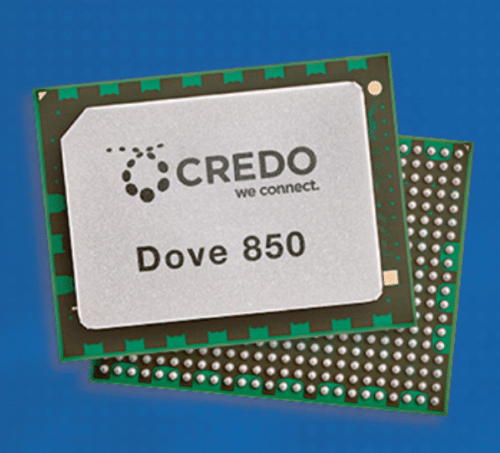The DSP IC transforms AI data centres and optical connectivity with energy efficiency and adaptability for various optics.

Credo Technology Group Holding Ltd announced the release of the Dove 850 800G Digital Signal Processor (DSP) IC for Linear Receive Optics (LRO), also known as Half-retimed Linear Optics (HALO). In LRO transceivers or Active Optical Cables (AOC), the DSP is used in the transmit path from electrical input to optical output for signal retiming and equalisation. The Dove 850 is a unidirectional DSP for 8 x 112 Gb/s, designed for LRO systems.
With the growth of AI deployments in hyper scale data centres, high-speed optical transceivers and Active Optical Cables (AOCs) become essential for connecting GPUs. The Dove 850 meets the need for improved energy efficiency in these components and contributes to system performance and cost reduction.
Transceiver vendors can further optimise the module cost with Dove 850 by employing a variety of optics, including VCSELs, silicon photonics, EML or thin-film lithium niobate as dictated by the application requirements.
A Dove 850-based optical transceiver aims to address the inherent weakness of a Linear Pluggable Optics (LPO) implementation by facilitating IEEE-compliant optical transmit signalling and easing the deployment burden on system operators by eliminating manual, per port tuning. The result is lower bit error rates, enhanced sensitivity, reduced performance variation, and improved resilience to switch ASICs, PCB traces, optical components, and environmental conditions.
The device complies with IEEE 802.3 and CMIS 5.x, featuring 8 x 112 Gb/s PAM4 on the electrical host receiver and optical line transmitter interfaces. The electrical host side receivers use copper DSP for improved sensitivity and bit error rate performance. The line side transmitters come with multi-tap FIR filters and non-linear correction suitable for multi-mode and single-mode optics. It includes independent phase-locked loops per channel, supporting various breakout configurations like 2x400G, 4x200G, and 8x100G. The device also has link diagnostic features for more straightforward lab setup and production testing. Its low power dissipation reduces cooling needs and produces an energy-efficient 800G optical solution.
For more information, click here.






